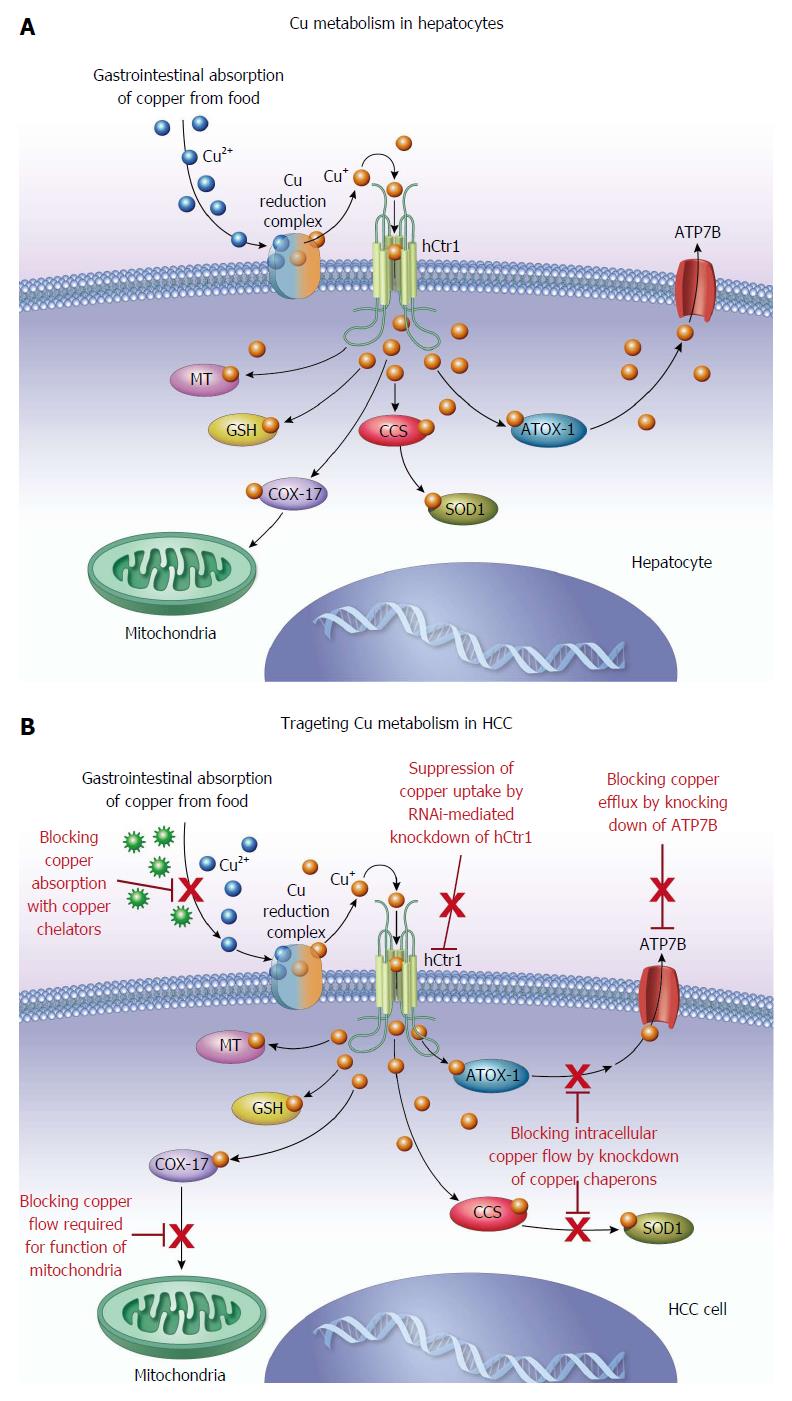Copyright
©The Author(s) 2016.
World J Gastroenterol. Jan 7, 2016; 22(1): 221-231
Published online Jan 7, 2016. doi: 10.3748/wjg.v22.i1.221
Published online Jan 7, 2016. doi: 10.3748/wjg.v22.i1.221
Figure 2 Perspective on targeting copper metabolism for the treatment of hepatocellular carcinoma.
A: Copper metabolism in hepatocytes. Copper metabolism in hepatocytes is regulated by a network of copper transporters and chaperons. Following copper uptake mediated by the influx copper transporter, hCtr1, copper is transported intracellularly by copper chaperons and copper homeostasis is maintained by the outflow of copper mediated by the efflux copper transporter, ATP7B; B: Targeting copper metabolism for the treatment of hepatocellular carcinoma (HCC). Copper is required for cell proliferation and may play a role in the signaling transduction pathway regulating proliferation of HCC cells. Targeting copper metabolism with copper chelators has been tested for anti-copper therapy of HCC, with variable response. RNAi-mediated knockdown of hCtr1 and/or other copper chaperons is a potential new approach for targeted anti-copper gene therapy of HCC. Furthermore, ionic 64CuCl2 or 67CuCl2 have potential as new radiopharmaceuticals for systemic radionuclide therapy of HCC, based on increased 64Cu uptake of HCC visualized on preclinical PET/CT images. hCtr1: Human copper transporter 1; ATOX-1: Antioxidant 1; Cox 17: Cytochrome c oxidase 17; CCS: Copper chaperone for superoxide dismutase; SOD1: Superoxide dismutase 1; GSH: Glutathione; MT: Metallothionein; ATP7A: Copper-transporting ATPase 1; ATP7B: Copper-transporting ATPase 2; PET/CT: Hybrid position emission tomography and computed tomography.
- Citation: Wachsmann J, Peng F. Molecular imaging and therapy targeting copper metabolism in hepatocellular carcinoma. World J Gastroenterol 2016; 22(1): 221-231
- URL: https://www.wjgnet.com/1007-9327/full/v22/i1/221.htm
- DOI: https://dx.doi.org/10.3748/wjg.v22.i1.221









